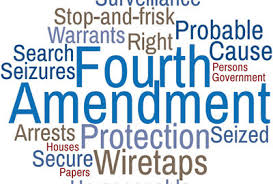Evidence Admission and Suppression Order Instructions: Topic: Evidence Admission and Suppression

Each state has adopted a variety of rules regarding what facts are deemed proper evidence. Only what a court deems admissible evidence may be considered in reaching a verdict of guilt or innocence. Evidence that is suppressed because it was gathered in violation of the Constitution may have a profound impact on the guilt of a defendant. However, the ability to limit what information a juror has access to is becoming increasingly more difficult to control.
The prevalence of “smart-phones,” e-readers, tablets, and news feeds via gaming systems can result in jurors gathering data about a defendant, victim, crime scene, or witness that was not even presented at trial or specifically excluded by the court. This especially becomes a temptation when jurors are permitted to go home when a trial stretches beyond a single day.
Evidence Admission and Suppression Thread
If the goal for a trial is the search for justice, why should there be rules that limit a juror’s ability to render a verdict only to that information gathered in compliance with the Constitution and approved by the judge? Provide the scriptural, constitutional, and scholarly basis for your position.
Discussion Board Assistance:
How reliable is the internet for factual reports about the people, places, and events that might influence a juror’s decision to convict? Is Facebook or Twitter a valid source to form an opinion about the truthfulness of a witness or the honesty of a victim? Should videos posted on YouTube by or about a police officer serve as a basis for evaluating his/her testimony? Does belonging to a group or “liking” a gun club, animal rights organization, political party, or pro-abortion group worthy of consideration in a search for justice? Are blogs, websites, wikis or search engines like Google unbiased sources of news and information?
Evidence Admission and Suppression Sample Answer
Evidence Admission and Suppression
Jurors play a significant role in the legal system. In a criminal trial, they have the duty of determining the guilt of the charged person basing upon the facts presented. The jury is required to reach the verdict basing only on the evidence that has been presented in the court and in line with the judge’s directions. Juror misconduct occurs where, while the trial is in progress, a member of the jury communicates with those outside the trial including judges, bailiffs, attorneys, witnesses, and the victim. It is misconduct for a juror bring outside evidence into the trial (Hannaford-Agor, Rottman & Waters, n.d.).
According to Strutin (2010), the information age has raised concerns as to the widened the scope of juror misconduct. Most jurors get involved in online misbehavior, which include the publication and distribution of information concerning the trial through such mediums as Facebook and Twitter, creating contacts with judges, lawyers, and witnesses through social media, discovering information concerning the case through the internet, making visits to virtual crime scenes, as well as engaging in pre-mature discussions or deliberations concerning the litigation or consulting outside opinions.
There are various cases that have been decided in relation to juror misconduct. In Lockwood v State, 2010 WL 3529416 (Nev), the court ruled that a juror engaged in misconduct by consulting eight to ten internet articles regarding the nature of the injuries of the victim and distributed her findings to the other jurors in the course of deliberations. Similarly, in Oliver v. Quarterman, the court held that the jurors’ use of the Bible to determine the sentencing of the offender during the trial stage constituted improper external influence on the deliberations of the jurors. The jurors applied the Biblical provisions that “thou shall not kill” and that the sentence for death is death.
Thus, it is evident that there is a possibility of external information affecting the deliberations of the jurors and lead to a miscarriage of justice. It is in the interests of justice that the jurors’ ability to obtain external information be limited.
Evidence Admission and Suppression References
Hannaford-Agor, P., Rottman, D.B., & Waters, N.L. (n.d.). Juror and Jury Use of New Media: A Baseline Exploration. Perspectives on State Court Leadership. Retrieved from: http://www.sji.gov/PDF/NCSC_Harvard_005_Juror_and_Jury_Use_of_New_Media_Final.pdf
Lockwood v State, 2010 WL 3529416 (Nev).
Oliver v Quarterman (2008). Retrieved from: http://caselaw.findlaw.com/us-5th-circuit/1323813.html
Strutin, K. (2010). Juror Behavior in the Information Age. LLRX.com. Retrieved from: http://www.llrx.com/features/jurorbehavior.htm




